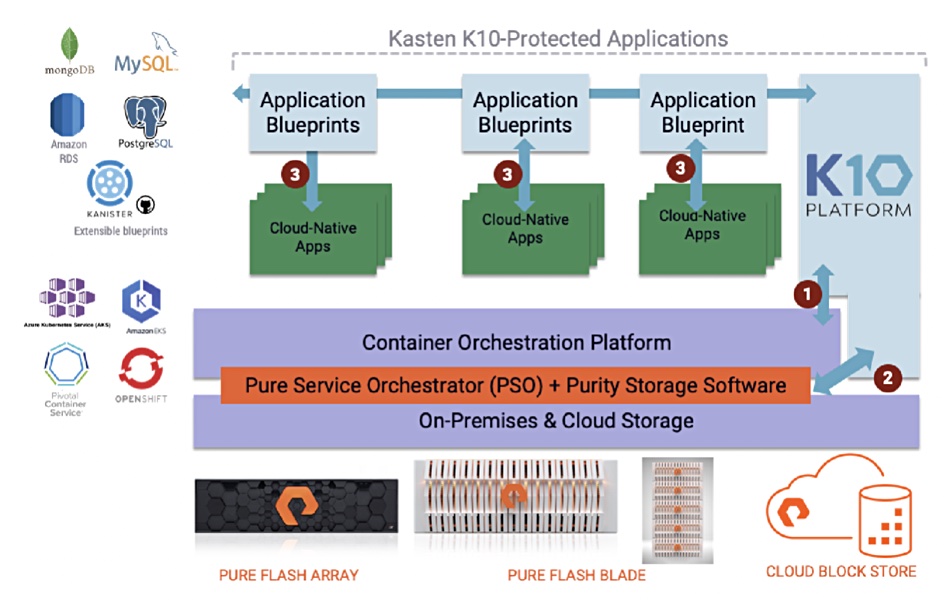Pure Storage has teamed up with Kasten to integrate its storage arrays with Kasten’s containerised app backup.
The news is detailed in a Pure Storage blog co-authored by Pure principal solutions architect Jon Owings and Kasten head of product Gaurav Rishi.
They say: “If you are a Pure Storage customer with Kubernetes applications, this solution can now enable you to use cases such as:
- Easy backup/restore for your entire application stack to make it easy to ‘reset’ your application to a good known state
- Fast cloning to a different namespace within your cluster for debugging
- Disaster recovery of your applications in another cluster, region, or cloud.”
A free edition of K10 can be installed in less than ten minutes, according to the bloggers.
Orchestrators
The PSO (Pure Storage Orchestrator)-K10 integration means that K10 can discover containerised applications in a Kubernetes environment and use FlashBlade, for example, as a vault for its backups.

PSO provides primary block storage via FlashArray and Cloud Block Store and secondary file + object with FlashBlade storage for containers.
The software acts as an abstraction layer that presents a fleet of Pure storage arrays as a single federated resource for provisioning storage-as-a-service to containers. Some or all of the arrays can simultaneously provide storage to other servers for bare metal or virtualized workloads.
The fleet can comprise a mix of FlashArray, FlashBlade and Cloud Block Store arrays, and PSO uses policies to decide which array satisfies which cloud-native storage request. PSO supports various container orchestrators such as Kubernetes and Docker.

Kasten’s K10 software uses Kubernetes to provide agentless data protection and mobility at the application level to containerised workloads.
K10 automatically discovers applications and their container components and policies. It provides backup and restore at the application level for hybrid computing setups and can move applications from one run-time environment to another. This may be useful for disaster recovery purposes.
K10 has built-in security features, such as role-based access controls, air-gapped installs, encryption at rest and in motion for storage, backup and application mobility. It also has integrations with RDBMS and NoSQL databases.







